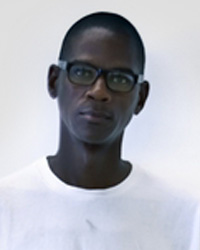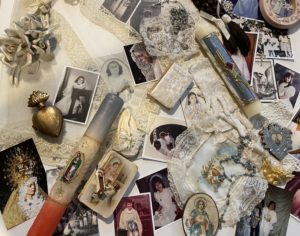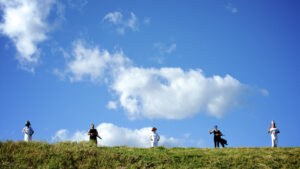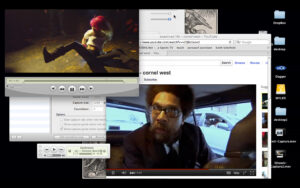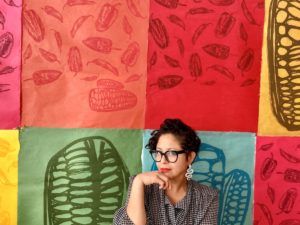Activity
My assignment for you is in three different parts and will hopefully help you to more clearly see how you feel about and relate to the immediate world you live in.
Media
Collage, drawing, mixed media, sculpture
Materials
Colored pencils or pens, computer, poster paper, printer, scissors, tape
Download This Activity
PDF | Word Document
About Open Studio
Designed by practicing artists, the Open Studio classroom activities aim to connect high school teachers and students with key ideas and issues in contemporary art. See all of the Open Studio activities.
Assignments
Assignment 1
Song Text Piece: Arrangement/Subtraction
Pick a song with lyrics you like, then type the lyrics on a computer. Pick a font you like and make the type size 36 or 48, so that it’s big enough to read at a distance, and then print the whole thing out. Cut out the words and arrange them on a large poster-size sheet of paper. Finally, use scissors to remove any words that you don’t like, or that make you feel bad or uncomfortable.
… if you rearrange the words out of order, is it a remix?
Assignment 2
Mapping the Lunchroom: Visual Information as Abstraction
Using a large poster-size piece of paper (24 x 36 inches, for example), draw a map of the lunchroom or cafeteria in your school. Consider the architecture and furniture (walls, tables, chairs, cash register, etc.). Lay a second piece of paper on top of the map and draw the social groups that form within the space. Your drawing should include indications of how people move through the space. Think about how to articulate this information using color, shape, and line. For example, red dots for the cheerleaders, blue squares for the basketball players, yellow lines for the hipsters entering and exiting the room.
Is abstraction inherently all around us, and is expressing it simply a matter of separating it from the architecture of everyday life?
Assignment #3
Blind Sculptures: Displacing Linear Process; Physical Translation
This assignment is done in two parts: a contour drawing of a self-portrait, then a sculptural translation of the portrait.
With your eyes closed, draw your own head (from the shoulders up). Use your non-drawing hand to feel your features from the back of your neck, up and over the skull, across the hairline, down the forehead, and around the eye sockets, nose, cheeks, lips, and chin. Translating touch into drawing usually works best when the pencil never leaves the paper—create this portrait using one long, single line.
Next, translate your contour drawing into three dimensions using paper and masking tape (paper and tape is cheapest, but you can use anything, really: wire, clay, etc.).
The larger idea is that the choices you make might reveal who you are as a young adult and how you translate your identity into an artwork.
Everything that you’ll ever need to make art is already all around you. How can these ideas be adapted to something more specific to where and how you live and study?
Remember that these are only suggestions, places to start. If you begin to wander, just go with it and see where you end up.
And, of course, have a great time!
